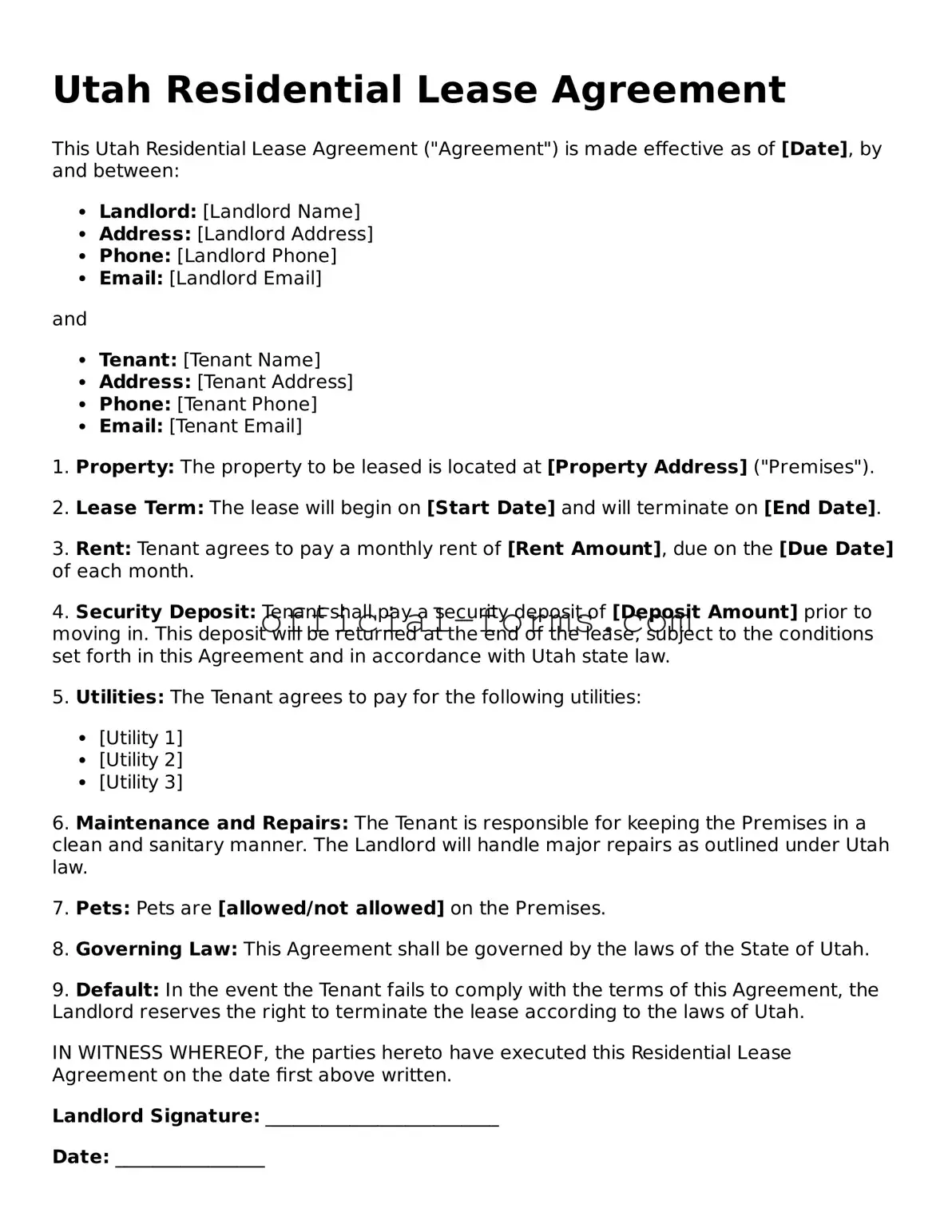The Utah Lease Agreement form serves as a crucial document in the landlord-tenant relationship, outlining the terms and conditions under which a rental property is leased. This legally binding contract typically includes essential elements such as the names of the parties involved, the rental property address, and the duration of the lease. Rent payment details, including the amount due and payment methods, are clearly specified to avoid any misunderstandings. Additionally, the form addresses security deposits, maintenance responsibilities, and rules regarding property use, ensuring that both landlords and tenants have a clear understanding of their rights and obligations. Provisions for lease termination, renewal options, and consequences for breach of contract are also included, providing a comprehensive framework for managing the rental arrangement. By delineating these aspects, the Utah Lease Agreement form aims to protect the interests of both parties and foster a respectful and transparent rental experience.
